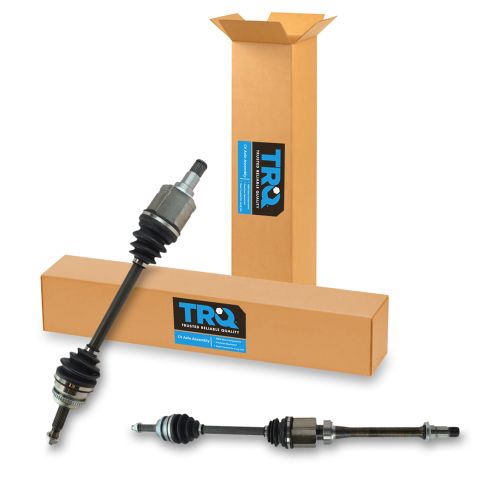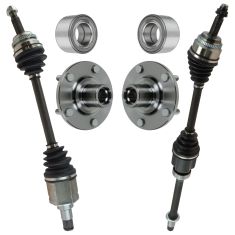1AACS00192-Toyota Camry Highlander Solara Front Driver & Passenger Side 2 Piece CV Axle Assembly Set TRQ CSA82565

Replaces
2002 Toyota Highlander L4 2.4L Front Wheel Drive Front Driver & Passenger Side 2 Piece CV Axle Assembly Set TRQ CSA82565

Product Reviews
Loading reviews
4.69/ 5.0
16
16 reviews
Hi
May 20, 2018
I really really like this my order its very very good
Great parts
October 20, 2018
The parts were the right for my car and now I drive smooth around town
December 16, 2018
So far so good still working on the passenger side. Customer service was amazing.
Great parts
December 29, 2018
Good quality parts would recommend 1A Auto to buy parts from. Will be buying more from them.
Superb Quality!
March 14, 2019
These axles are superb quality and shipped to me super fast! 1A Auto has a new customer for life!
Had issues with the parts
May 3, 2019
I have always been happy with 1AAuto but I had an issue this time around. The axle seal/cover was bent and I had to re-use the old one. I dont know if it was damaged during shipping or if was just defective. Anyways I just removed the old one and re-used it. Normally everything is spot on but not this time. I also have a picture of the defective part.
Amazing
November 11, 2019
Thanks for the high quality product. After a month and 30k miles, product seems great as of this moment
No problems
November 24, 2019
My mechanic installed this part with no problems. My car drives so much better now.
New axles
July 1, 2020
Packaging was damaged and a shield was bent, I was able to salvage my old shield and axles mounted nicely
Customer service on 100%
August 4, 2020
1aauto thank you guys for being the best site to buy parts I bought driver side and passanger axles and got the part fast but when I got it I notice my driver side part was missing. I sent a message about the missing part and I was not able to check for a reply, but for my surprise when I checked for a reply I received a message that my part is being sent in. Their was with no hassle no need of hunting down for reply. Thank you so much this company will always get my business from this amazing customer service
February 20, 2022
They fitted as expected, I've had no issues with these parts, thank you 1A Auto team.
Great
September 18, 2023
Great ??
Quality product
February 4, 2024
Quality product as always!
Replacement axles
May 25, 2024
This item was exactly as advertised and it worked great
May 31, 2024
Easy install, great video to take a person through the steps.
works well
September 12, 2024
works well
Customer Q&A
After replacing cv axle shaft can your car still pull one way?
April 4, 2019
10
There could be multiple reasons why you're having this particular problem. We suggest taking your vehicle to a nearby reputable shop to identify the cause. Once you know the cause, we'll be happy to see if we carry the parts and how-to videos needed for your repair.
April 4, 2019
Emma F
Good day,
Can this CV Axle works with the Japanese version/built ACV40 Camry? It uses the same U250E transmission so I assume the spline diameter is the same for the input shaft not sure about the output shaft.
May 3, 2020
10
Yes, this part is not specific to where the vehicle was built. Thanks for the inquiry!
May 4, 2020
Andra M
Does the passenger side cv include the bearing that goes inside the cv axle support housing?
March 12, 2023
10
Yes, the bearing will be included.
March 14, 2023
Jessica D
What is the length of the drivers side? My original is just over 28" but everyone I find to replace is just over 26" . Why is that?
April 5, 2023
10
Actual Measurements are not listed or available. Our parts are exact replacements for your vehicle's OEM parts. As long as your vehicle specifications match up with our listing, these parts will directly fit and function like the originals.
April 5, 2023
Emma F
Was the new axle shorter than the original one?
April 15, 2023
10
Witch side?
April 17, 2023
Kilon L
will this fit the 3l v6 motor?
October 6, 2024
10
This part will not fit your vehicle, but we may have a part that is listed to fit.
Please enter your vehicle's year make and model in the search bar at the top of the page. This will display parts guaranteed to fit your vehicle. Just be sure to verify all of the information shown in the Vehicle Fit tab before ordering.
October 7, 2024
Kemal S
Toyota is a registered trademark of Toyota Motor Corporation. 1A Auto is not affiliated with or sponsored by Toyota or Toyota Motor Corporation.
See all trademarks.













